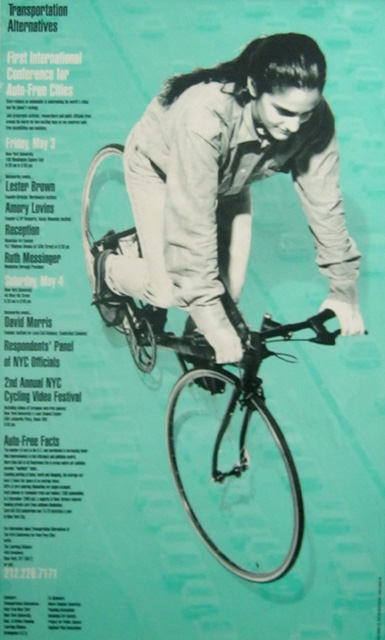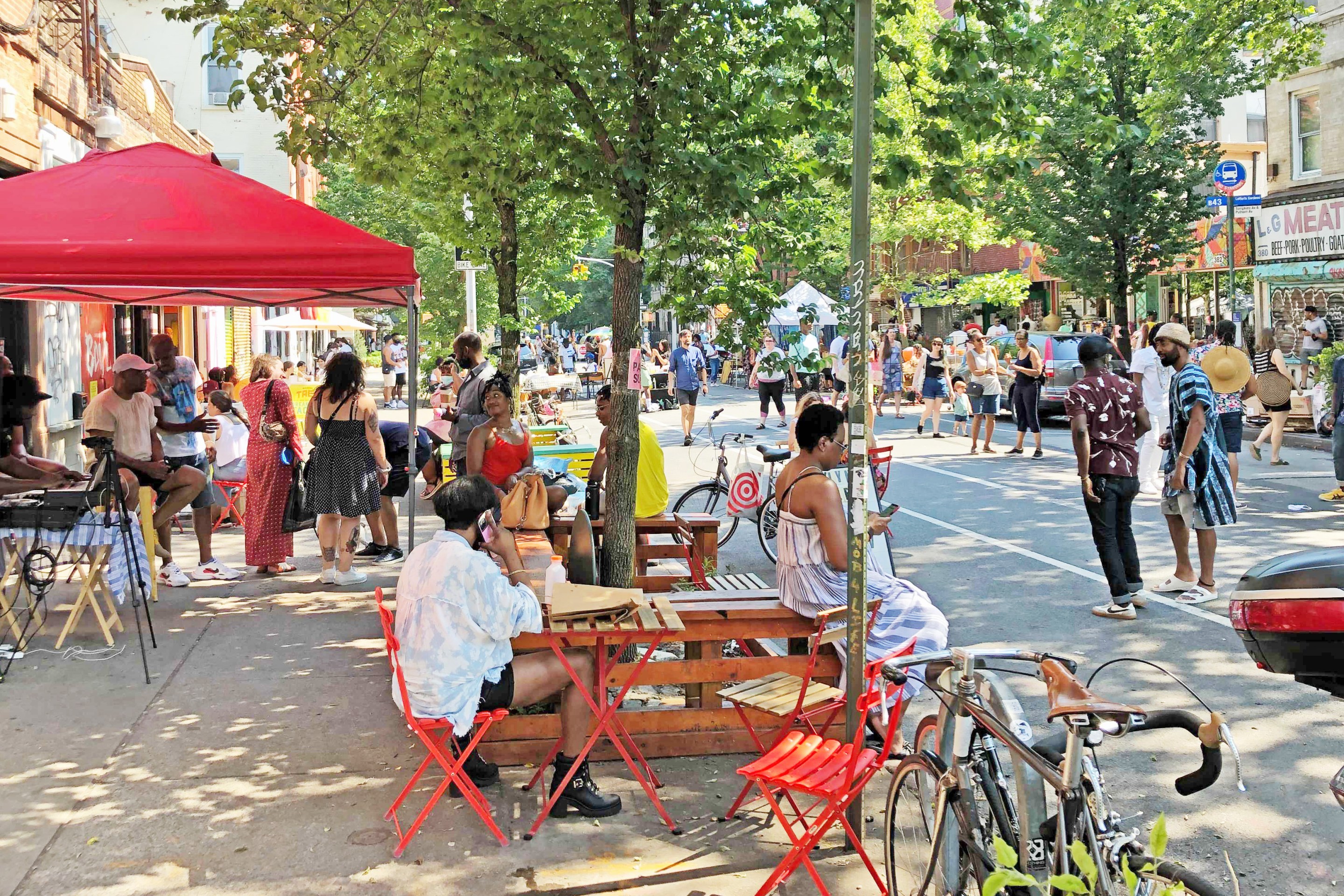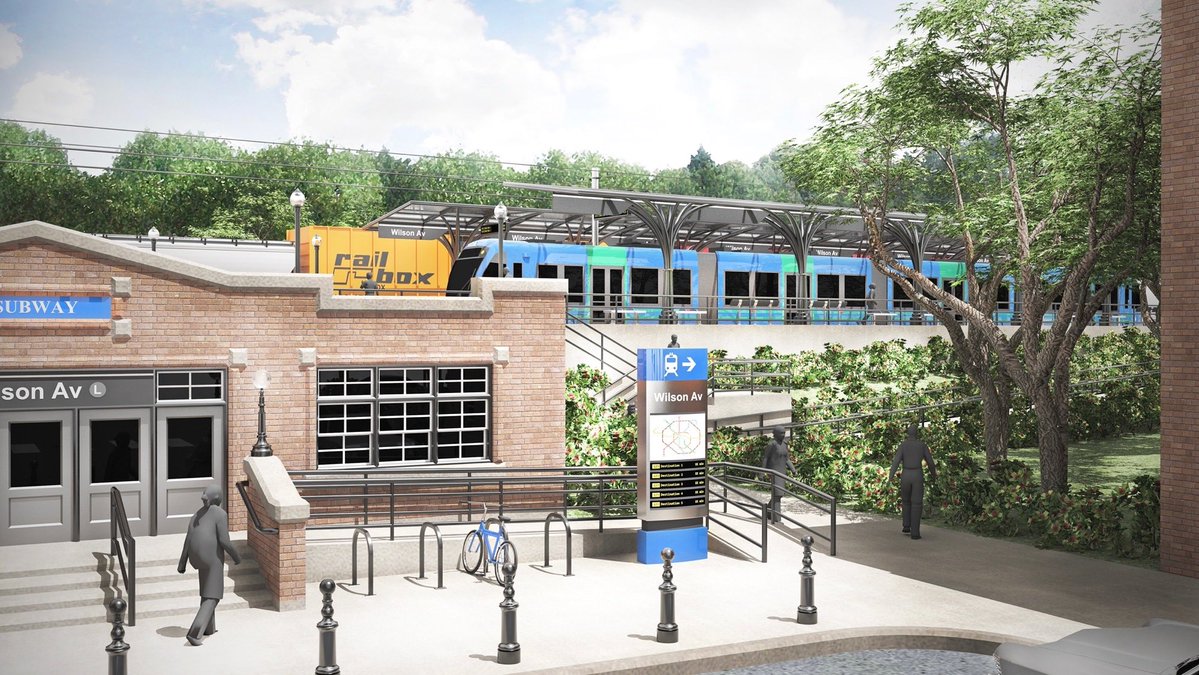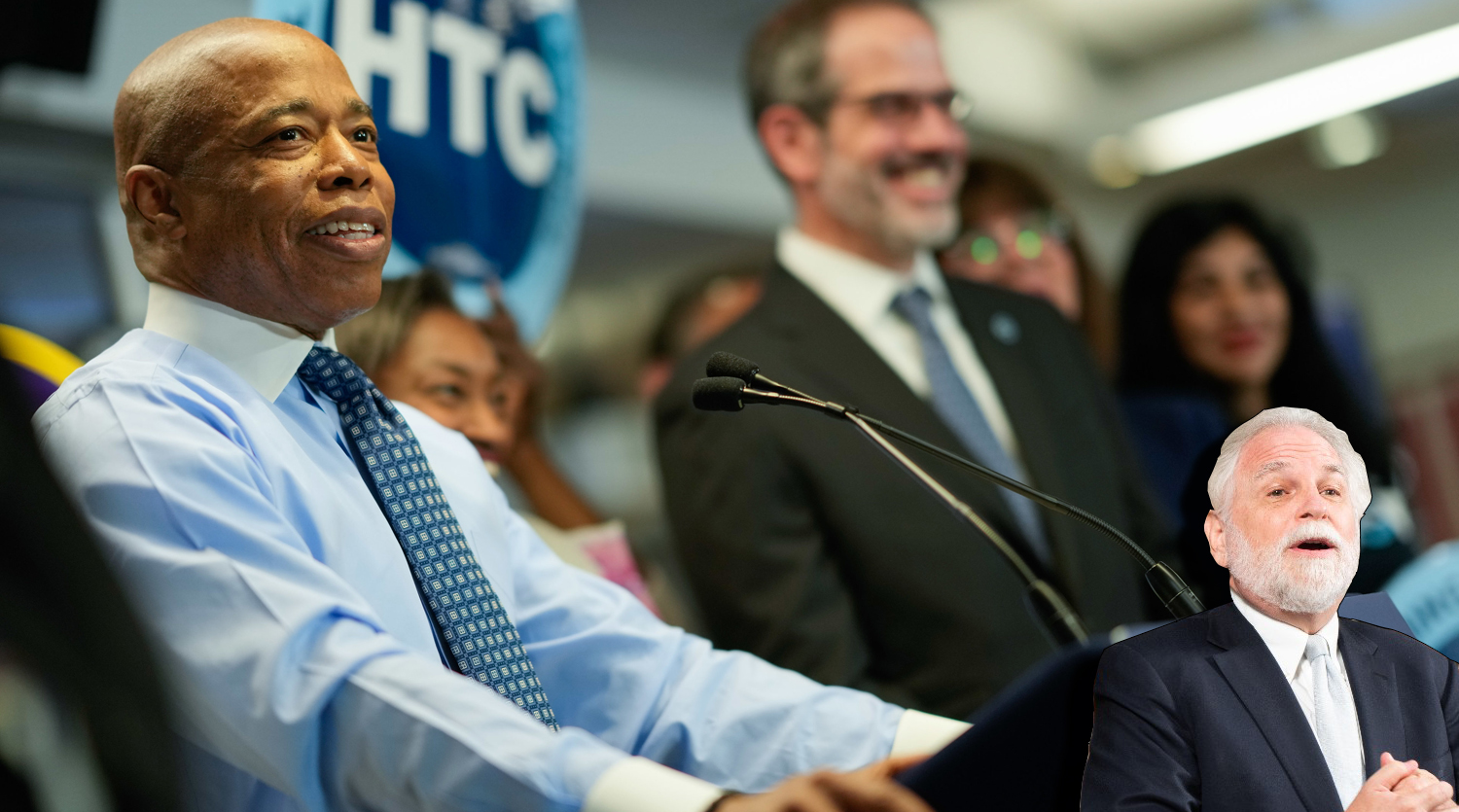The Bicycle Uprising, Part 5
1:37 PM EDT on September 4, 2012
This is the concluding installment of a five-part series looking back at the victory over the Midtown bike ban, 25 years ago. Read parts one, two, three and four for an overview of the bike ban, the advocacy of the 1970s and 80s, and my recounting of the activism that followed the uprising against the ban. Activists are organizing a September 28 bike ride and forum to commemorate and celebrate these events, and Streetsblog readers are invited to participate and contribute.
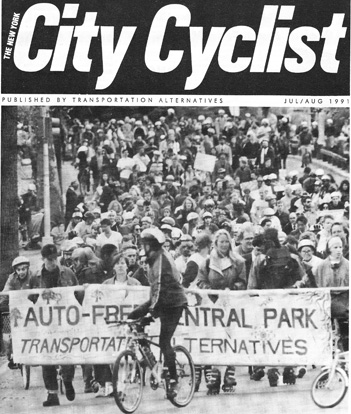
Auto-Free Cities Conference (1991) -- Beginning with the 1987 bike ban uprising, New York City bike activists sent a charge through biking advocacy and bike culture around the country. During the late 1980s and early 1990s Transportation Alternatives board members and staff spoke and networked at bike gatherings in San Francisco, Berkeley-Oakland, Chicago and Boston and at the biennial “Pro-Bike” conferences in Washington (1990), Montreal (1992) and Portland, Oregon (1994), and contributed dozens of articles to local and national cycling newsletters and ‘zines. What probably most inspired our fellow cycling advocates was not our particular string of victories but the ardor and creativity of our campaigns and our articulation of cycling as environmental, political and communitarian. For many, NYC-style bike activism came to embody a more authentic and appealing model than the cultish “Effective Cycling” ideology that demanded cyclists stifle disdain for car culture and view themselves as drivers. We portrayed cycling as not just a sport or even a means of transport but a basis for organizing one’s city.
Key to this holistic approach was an insistence on minimizing the presence of private automobiles in cities. In 1988, TA took into its ranks Auto-Free New York, a visionary group founded and led by civil engineer and city planner George Haikalis to articulate and exploit the synergies between road pricing, fewer cars, better transit, and more space for walking and cycling. In its newsletter, Auto-Free Press, and in lectures, reports and demonstrations, AFNY prodded believers and skeptics alike to “explore and achieve the upper limit of ‘devehicularization’ of our nation's largest city.”
The grandest expression of AFNY’s vision was the “International Auto-Free Cities” conference that Transportation Alternatives convened at NYU in 1991. For two days in May, illustrious thinkers and writers like Worldwatch Institute founder Lester Brown, “Asphalt Nation” author Jane Holtz Kay, and Columbia University Professor Bill Vickrey -- later awarded the Nobel Prize in economics for pioneering the field of traffic pricing -- rubbed shoulders with bike messengers, cycling advocates and anti-car activists from across the U.S. and Canada. The energy was so infectious that an official with the NYC Transit Authority went off script and pledged that his agency would scrap its blanket prohibition against bringing bikes onto subways. The conference altered my life and career as well. Vickrey’s presentation, and a parallel one by engineer-analyst (and TA co-founder) Brian Ketcham on the societal costs of auto use, launched me on my present path as quantifier and advocate for traffic pricing.
Epilogue
Carl Hultberg and others from the “1987 generation” began rotating off the Transportation Alternatives board in 1988-89. Board member Peter Meitzler moved to San Francisco and played a key role in re-energizing the SF Bicycle Coalition. I stepped down as TA president at the start of 1992 and devoted myself to curating and editing TA’s Bicycle Blueprintbook. My departure from the board in 1994 drew the curtain on the core of activists who had been raised up by the campaign against the Midtown bike ban.
Some of the uprising’s energy and grit remained imprinted, as it were, in TA’s DNA. Street actions continued, backed by hard-hitting analyses, strategic alliances with supportive elected officials, and growing press hits. TA’s car-free Central and Prospect Park campaigns goaded city officials to institute steadily escalating expansions of car-free hours at both parks. TA protests helped prompt the Daily News to spotlight Queens Boulevard as the “boulevard of death” and raised consciousness about car violence across the city. TA partnerships with community groups created and promoted the concept of safe routes to schools, working mainly in poor neighborhoods that hadn’t been touched by livable streets activism.
The landscape for bike-pedestrian advocacy was evolving. In 1991, a nationwide alliance of local activists, national environmental groups and urban advocates pushed through federal legislation that for the first time made federal transportation money available for bike and pedestrian enhancements. TA recruited allies in city and state government who directed big bucks to innovative infrastructure, most notably the Hudson River Greenway but also pedestrian improvements in Herald Square that later became a template for public plazas in Times Square and along Broadway.
At the same time, however, the Giuliani Administration was freezing out organizing of any sort and cracking down on street demonstrations. In the cycling community, the torch of unsanctioned civil protest -- which brought people onto the streets, “permitted” or not (e.g., in Critical Mass rides) -- began to pass to Time’s Up, the “direct action environmental organization” that also turned 25 this year. Beginning in 1996, an ad hoc group that included Time’s Up founder-director Bill DiPaola, former TA board member Peter Meitzler and myself launched the Street Memorial project, which ultimately stenciled over two hundred "Killed By Automobile" body outlines on streets and sidewalks where pedestrians and cyclists had been run over by drivers, and produced the path-breaking report of the same name.
Circa 2006-2007, a new era arrived with the advent of Streetsblog and its innovative framing of advocacy for cycling, walking, public spaces and transit under the common rubric of Livable Streets; with an enlarged funding base for Transportation Alternatives that greatly expanded its visibility and reach; and with Mayor Bloomberg’s appointment of Janette Sadik-Khan as NYC Transportation Commissioner. Of course, the sine qua non of auto-free travel in New York City has been the revitalization of public transit, championed by Gene Russianoff’s Straphangers Campaign and financed by an array of dedicated taxes that since the early 1980s have generated tens of billions of dollars to rehabilitate, modernize and expand subways, buses and commuter rail.
By my estimates, the number of cycling trips in the five boroughs in 2011 was twice that of a half-dozen years before, and two-and-a-half times the level in 1987, and accounts for more than two percent of “vehicle” miles traveled in the five boroughs. However, the advent of digital communication has decimated bike-messengering, with couriers’ share of bike trips plummeting more than ten-fold to just three percent (I estimate that food delivery now accounts for around 17 percent of NYC bicycle trips). Overall cycling would have grown even more spectacularly if not for the NYPD’s systemic indifference to protecting vulnerable street users’ lawful right-of-way.
Nevertheless, cycling’s place on New York’s streets and in its culture and economy has broadened remarkably since the bike ban uprising and since Transportation Alternatives published the Bicycle Blueprint with the subtitle, “A Plan to Bring Bicycling into the Mainstream in New York City.” With one in six New Yorkers telling the New York Times they ride at least once a week, with ridership poised to grow further once bike-share comes on line, and with bicycling increasingly valued for making New York City more healthy, livable and vibrant, cycling is finally -- a quarter-century after cyclists vanquished the Midtown bike ban -- entering the city’s mainstream.
Source documents that illuminate this series are available at Komanoff.net. The author thanks Christopher Ketcham, Keegan Stephan, David Perry and Streetsblog editor-in-chief Ben Fried for editorial suggestions and guidance.
Charles Komanoff is a national expert on congestion pricing and traffic modeling, and is the former head of Transportation Alternatives. He is a longtime Streetsblog contributor. Reach him at komanoff@gmail.com.
Stay in touch
Sign up for our free newsletter
More from Streetsblog New York City
Gotcha-Heimer! Anti-Congestion Pricing Jersey Rep. With a City Speeding Ticket Drove to Manhattan on Wednesday
New Jersey's most vociferous opponent of congestion pricing parked illegally and once got a speeding ticket.
Under Threat of Federal Suit (Again!), City Hall Promises Action on ‘Unacceptable’ Illegal Police Parking
A deputy mayor made a flat-out promise to eliminate illegal police parking that violates the Americans With Disabilities Act. But when? How? We don't know.
Wednesday’s Headlines: Four for Fifth Edition
The good news? There's a new operator for the Fifth Avenue open street. The bad news? It's four blocks, down from 15 last year. Plus other news.
MTA Plan to Run Brooklyn-Queens Train on City Streets a ‘Grave’ Mistake: Advocates
A 515-foot tunnel beneath All Faiths Cemetery would slightly increase the cost of the project in exchange for "enormous" service benefits, a new report argues.
Full Court Press by Mayor for Congestion Pricing Foe Randy Mastro
Pay no attention to that lawyer behind the curtain fighting for New Jersey, the mayor's team said on Tuesday, channeling the Wizard of Oz.
